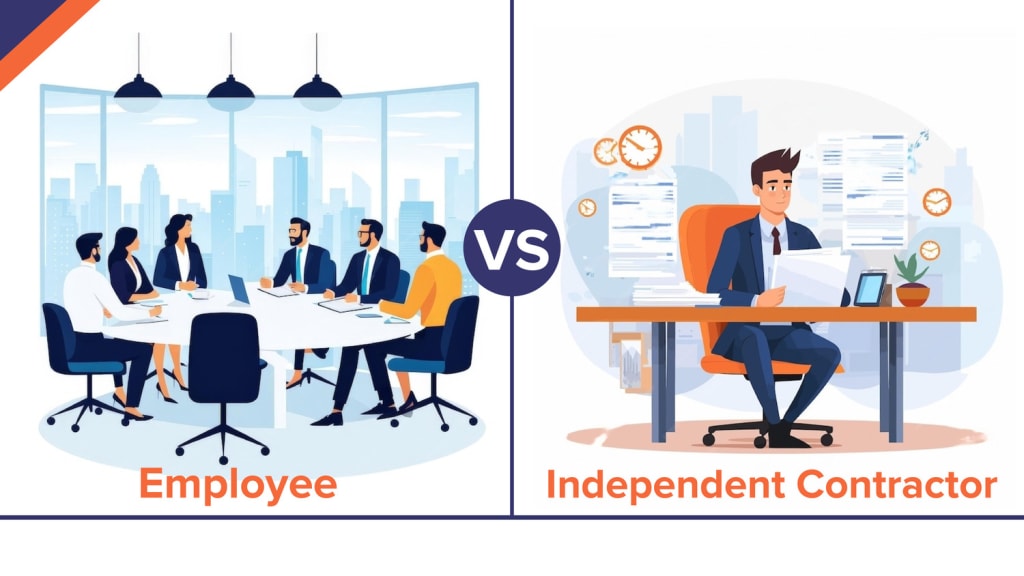
As your power washing business grows, one major decision will shape your operations, costs, and long-term scalability: Should you hire employees or work with subcontractors?
Both options can help you expand and handle more jobs—but each comes with unique pros, cons, and legal considerations. Making the right choice depends on your goals, cash flow, risk tolerance, and how much control you want over the work being done.
In this guide, we’ll break down everything you need to know about hiring employees vs. subcontractors in the pressure washing industry. 🧽📈
👥 What’s the Difference?
Let’s define each one clearly:
🧑🔧 Employee:
- Works directly for your company
- You set their schedule, provide training, and supervise their work
- You’re responsible for payroll taxes, workers’ comp, insurance, and benefits
🧑💼 Subcontractor:
- Works independently and provides their own tools and insurance
- You pay them a flat fee or percentage per job
- They set their own hours and methods, within agreed terms
Understanding the distinction isn’t just practical—it’s legal. Misclassifying a worker can lead to serious tax penalties. 💼⚖️
✅ Pros of Hiring Employees
Hiring staff can be the path to sustainable growth and tighter control over your brand.
1. Full Control Over Quality 🎯
You can train employees your way, enforce dress codes, and ensure jobs are done to your standards.
They represent your brand, not theirs.
2. Schedule Flexibility ⏰
You control when and where they work. This makes scheduling large jobs, urgent requests, or multi-day projects easier.
3. Loyalty and Team Culture 🙌
Employees tend to be more committed, allowing you to build a strong company culture and develop internal leaders.
4. Better for Long-Term Growth 🌱
If you want to scale into multiple crews, commercial contracts, or recurring services, employees give you a solid foundation.
❌ Cons of Hiring Employees
While rewarding, having staff also means increased overhead and legal responsibility.
1. Payroll and Taxes 💸
You must handle payroll taxes, unemployment insurance, and possibly benefits.
2. Workers’ Comp and Liability ⚠️
You’ll need a workers’ comp policy and higher general liability coverage—especially for roof or ladder work.
3. Management Headaches 😓
Training, performance management, and discipline fall on your shoulders. It’s more hands-on than subcontracting.
4. Legal Compliance 🧾
Employment laws (wages, hours, safety, breaks, etc.) must be followed strictly. Mistakes can lead to costly penalties.
✅ Pros of Using Subcontractors
Hiring subcontractors can be great for flexibility and minimizing overhead—especially in the early stages.
1. Lower Financial Risk 📉
You don’t pay payroll taxes or benefits. You only pay when work is performed.
2. Fast Scaling 🚀
Need extra hands for a big project? Subcontractors allow you to expand quickly without long-term commitments.
3. No Equipment to Provide 🛠️
Most subs bring their own tools, vehicles, and chemicals—reducing your capital expenses.
4. Less Admin Burden 📋
No need to run payroll or manage HR paperwork. You issue a 1099 and keep it simple.
❌ Cons of Using Subcontractors
Subcontractors are not your employees—and that comes with trade-offs.
1. Less Control Over Work 🛑
You can’t micro-manage how they do the job. If they cut corners, it’s still your company name on the line.
2. Brand Inconsistency 🧢
They may not wear your uniform, drive a branded truck, or match your customer service style.
3. Dependability Issues 😬
Because they’re not full-time, they may prioritize other gigs or be less responsive in a pinch.
4. Legal Gray Areas ⚖️
Misclassifying a subcontractor (e.g., controlling their schedule too closely) can lead to IRS fines or lawsuits.
💵 How Do the Costs Compare?
Let’s compare a $500 job with both options:
With an Employee:
- Pay: $150 wage
- Payroll taxes: ~$20
- Workers’ comp: ~$10
- Equipment provided: ✅
Total cost: ~$180
Your profit: $320
With a Subcontractor:
- Flat pay: $250 (often 50% of job total)
- No payroll taxes
- Uses their own tools and insurance
Your profit: $250
On paper, subs are more expensive per job, but require less effort and overhead.
🔍 Legal Checklist for Both Options
Whether you hire employees or subs, make sure to cover these bases:
For Employees:
✅ EIN and state payroll registration
✅ Workers’ comp insurance
✅ Payroll system (Gusto, ADP, QuickBooks)
✅ Safety training and SOPs
✅ Employee handbook and W-4s
For Subcontractors:
✅ Signed subcontractor agreement
✅ W-9 on file
✅ Proof of insurance
✅ Clear scope of work and payment terms
✅ Avoid controlling their hours or methods
Consult a tax pro or employment attorney to make sure you’re compliant in your state. 🧾👨⚖️
🤔 Which One Is Right for You?
Ask yourself:
- Do I want full control over how work is done? ➡️ Employees
- Do I want to avoid payroll and HR headaches? ➡️ Subcontractors
- Am I building a long-term brand with repeat business? ➡️ Employees
- Am I trying to scale fast with minimal risk? ➡️ Subcontractors
💡 Many power washing companies use a hybrid model: employees for day-to-day work, subcontractors for overflow or special jobs.
💬 Final Thoughts
There’s no one-size-fits-all answer—but knowing the real-world pros and cons of each option helps you make smarter business decisions.
Employees give you control, brand consistency, and scalability. Subcontractors give you flexibility, speed, and lower overhead. The key is matching your choice to your business goals and risk tolerance.
Choose wisely—and build your team like you build your brand: on a strong, sustainable foundation. 💪🧼👷♂️
Browse Amazon Here For Top Rated Power Washers And Accessories






